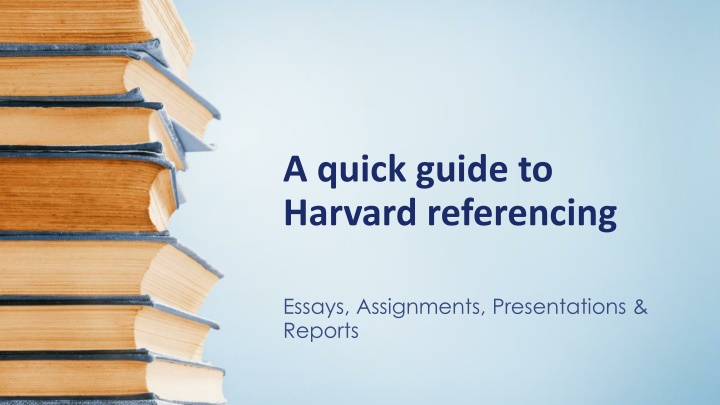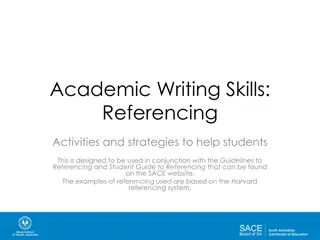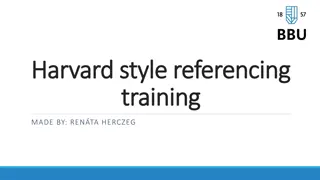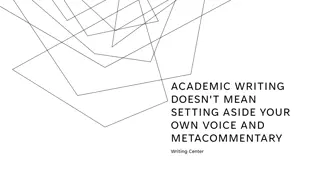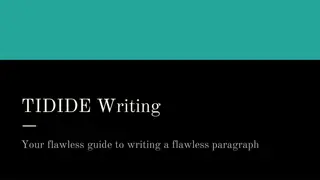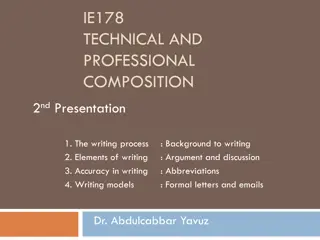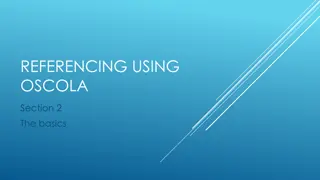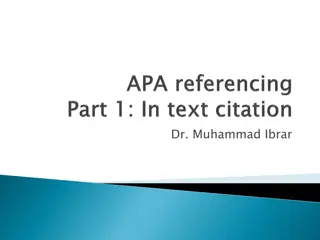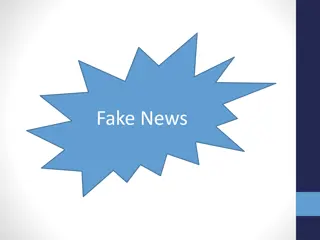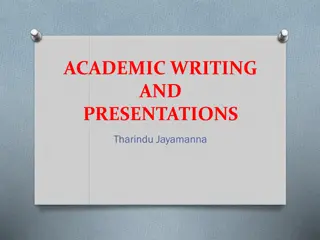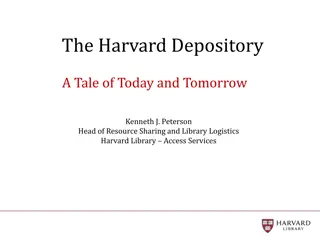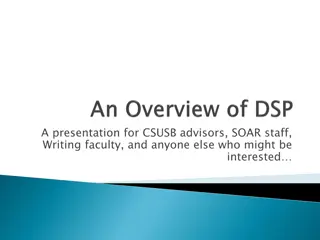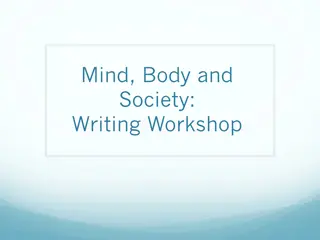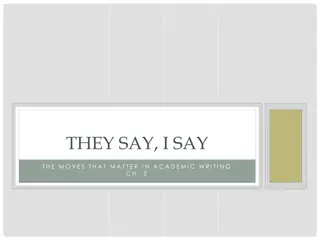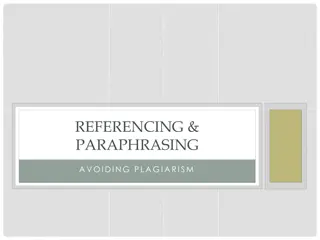Mastering Harvard Referencing for Academic Writing
Learn the essentials of Harvard referencing for academic writing, including in-text citations and reference lists. Understand the difference between a bibliography and reference list, and discover how to create a hanging indent in Word for your citations.
Download Presentation

Please find below an Image/Link to download the presentation.
The content on the website is provided AS IS for your information and personal use only. It may not be sold, licensed, or shared on other websites without obtaining consent from the author.If you encounter any issues during the download, it is possible that the publisher has removed the file from their server.
You are allowed to download the files provided on this website for personal or commercial use, subject to the condition that they are used lawfully. All files are the property of their respective owners.
The content on the website is provided AS IS for your information and personal use only. It may not be sold, licensed, or shared on other websites without obtaining consent from the author.
E N D
Presentation Transcript
A quick guide to Harvard referencing Essays, Assignments, Presentations & Reports
Guide to Harvard English Referencing Referencing is an important part of academic writing. It tells your readers what sources you ve used and how to find them. Harvard is the most common referencing style used in UK universities. In Harvard style, the author and year are cited in-text, and full details of the source are given in a reference list. This English (literary) practice has been implemented in North American post secondary institutions. A Harvard in-text citation should appear in brackets every time you quote, paraphrase, or refer to information from a source
Guide to Harvard English Referencing Though the terms are sometimes used interchangeably, there is a difference in meaning: A reference list only includes sources cited in the text every entry corresponds to an in-text citation. A bibliography also includes other sources which were consulted during the research but not cited. The citation can appear immediately after the quotation or paraphrase, or at the end of the sentence. If you re quoting, place the citation outside of the quotation marks but before any other punctuation like a comma or full stop.
Harvard in-text citation A Harvard in-text citation appears in brackets beside any quotation or paraphrase of a source. It gives the last name of the author(s) and the year of publication, as well as a page number or range locating the passage referenced, if applicable: The novel begins with the grim image of the train passengers faces, which are described as pale yellow, the colour of the fog (Dostoyevsky, 2004, p. 5). Note that p. is used for a single page, pp. for multiple pages (e.g. pp. 1 5 ).
Harvard in-text citation - continued An in-text citation usually appears immediately after the quotation or paraphrase in question. It may also appear at the end of the relevant sentence, if it s clear what it refers to. When your sentence already mentions the name of the author, it should not be repeated in the citation: Woolf introduces the essay s topic as women and fiction (2000, p. 5), going on to discuss the various connotations of the phrase.
How Do I Create Indent in Word? To create a hanging indent for your bibliography or reference list: 1. Highlight all the entries 2. Click on the arrow in the bottom-right corner of the Paragraph tab in the top menu. 3. In the pop-up window, under Special in the Indentation section, use the drop-down menu to select Hanging . 4. Then close the window with OK .
Sources with multiple authors When you cite a source with up to three authors, cite all authors names. For four or more authors, list only the first name, followed by et al. : Number of authors In-text citation example 1 author 2 authors (Davis, 2019) (Davis and Barrett, 2019) 3 authors (Davis, Barrett and McLachlan, 2019) 4+ authors (Davis et al., 2019)
Sources with no page numbers Some sources, such as websites, often don t have page numbers. If the source is a short text, you can simply leave out the page number. With longer sources, you can use an alternate locator such as a subheading or paragraph number if you need to specify where to find the quote: (Scribbr, para. 4)
Multiple citations at the same point Multiple citations at the same point When you need multiple citations to appear at the same point in your text for example, when you refer to several sources with one phrase you can present them in the same set of brackets, separated by semicolons. List them in order of publication date: Several in-depth studies have investigated this phenomenon during the last decade (Singh, 2011; Davidson, 2015; Harding, 2018).
Referencing sources with no author or date Sometimes you won t have all the information you need for a reference. This section covers what to do when a source lacks a publication date or named author. No publication date When a source doesn t have a clear publication date for example, a constantly updated reference source like Wikipedia or an obscure historical document which can t be accurately dated you can replace it with the words no date : (Scribbr, no date) In-text citation Scribbr (no date) How to structure a dissertation. Available at: https://www.scribbr.co.uk/category/thesis-dissertation/ (Accessed: 14 February 2020). Reference list entry
Creating a Harvard reference list A bibliography or reference list appears at the end of your text. It lists all your sources in alphabetical order by the author s last name, giving complete information so that the reader can look them up if necessary. The reference entry starts with the author s last name followed by initial(s). Only the first word of the title is capitalized (as well as any proper nouns).
Book Referencing Example Author surname, initial. (Year) Book title. City: Publisher. Format Smith, Z. (2017) Swing time. London: Penguin. Example The city mentioned is the location of the publisher s headquarters. Notes
Referencing Journal Articles Example Author surname, initial. (Year) Article title , Journal Name, Volume(Issue), pp. page range. Format Thagard, P. (1990) Philosophy and machine learning , Canadian Journal of Philosophy, 20(2), pp. 261 276. Example This format is also used for journal articles which you accessed online but which are available in print too. There is no space between the volume and issue number (in brackets). The page range shows where the article is in the journal. Unlike other titles, the name of a journal uses headline capitalization; capitalize every important word. Notes
Referencing Website Example Author surname, initial. (Year) Page title. Available at: URL (Accessed: Day Month Year). Format Google (2019) Google terms of service. Available at: https://policies.google.com/terms?hl=e n-US (Accessed: 27 January 2020). Example Reference list entries for pages without a clearly identified author can begin with the name of the relevant site or organization instead. Notes
Referencing Multimedia Example Author surname, initial. (Year) Title [Medium]. Institution, City or Available at: URL (Accessed: Day Month Year). Format Bosch, H. (1482) The last judgement [Triptych]. Groeningemuseum, Bruges. Example Cite images according to how you viewed them. For an image from a book, you d just cite the book. An image viewed online is cited similarly to other web sources. Include information about the medium of the image in square brackets; for example, Photograph or Oil on canvas . Notes
Referencing Newspaper & Magazines Example Author surname, initial. (Year) Article title , Newspaper Name, date, p. page number. Available at: URL (Accessed: Day Month Year). Format Butler, S. (2020) Women s fashion manufacturer to make reusable gowns for NHS , The Guardian, 28 April. Available at: https://www.theguardian.com/society/2020/apr/28/w omens-fashion-manufacturer-to-make-reusable- gowns-for-nhs (Accessed: 29 April 2020). Example Include the page number where the article begins if you read the article in print. If you read it online, include the URL and access date instead. Notes
Referencing Book Chapter Example Harvard referencing: Book chapter Author surname, initial. (Year) Chapter title , in Editor surname, initial. (ed./eds.) Book title. City: Publisher, pp. page range Template Greenblatt, S. (2010) The traces of Shakespeare s life , in De Grazia, M. and Wells, S. (eds.) The new Cambridge companion to Shakespeare. Cambridge: Cambridge University Press, pp. 1 14. Example
Referencing Dictionary Example Book title (Year) Edition edn. City: Publis her. Collins English dictionary (2019) 8th edn. Glasgow: Collins. (Collins English dictionary, 2019, p. 45) Template Example In-text citation
Referencing E-Book Example When an eBook is presented like a printed book, with page numbers and publication details included, you can reference it in the same format as you would the print version. Otherwise, the eBook format differs slightly: Include a link to where you found or purchased it online instead of publisher information. This link is generally just to the store or database you used, not the specific book. In addition, in-text citations will have to use something other than page numbers when necessary, such as a percentage or location number. Use whatever marker is available on your device.
Referencing E-Book Example . Author surname, initial. (Year) Book title. Available at: URL (Accessed: Day Month Year). Le Guin, U. K. (2017) The left hand of darkness. Available at: https://www.amazon.co.uk/Kindle- eBooks- books/b?ie=UTF8&node=34168903 1 (Accessed: 8 May 2020). (Le Guin, 2017, 85%) Template Example In-text citation example
What is plagiarism? Plagiarism is a common problem, primarily among students. This plagiarism quick guide offers an overview of what plagiarism is, what the consequences are and how plagiarism can be avoided. Definition of plagiarism Merriam-Webster Dictionary defines plagiarism as follows: To steal and pass off (the ideas or words of another) as one s own: to use (another s production) without crediting the source
Weve highlighted two sections of this definition. 1. Many people think plagiarism is stealing someone else s words, but it also means stealing someone else s ideas. In other words, even if you paraphrase a text, the idea still needs to be cited. 2. The phrase without crediting the source means that it s okay to use the words and ideas of others, but you have to cite the source to avoid committing plagiarism.
Types of plagiarism Plagiarism takes various forms. It ranges from reusing an entire document to rewriting a single paragraph. In the end, all types of plagiarism come down to passing off someone else s ideas or words as your own. Common types of plagiarism Copy-and-paste plagiarism Copy-and-paste plagiarism, also known as direct plagiarism, means using a paragraph from another source without a citation. If you really want to include a passage from another source word for word, you should learn how to quote it.
Common types of plagiarism Mosaic plagiarism Copying and pasting different pieces of text together to create a kind of mosaic or patchwork of other researchers ideas is plagiarism. Although the result is a completely new piece of text, the words and ideas aren t new.
Common types of plagiarism Self-plagiarism When you use parts of your previous work (e.g. a paper, a literature review or a dataset) without properly citing it, you commit what s called self-plagiarism. Although it sounds a bit crazy to be penalized for plagiarizing your own work, you should know that it is done because it goes against the expectations of the readers of your paper. They expect the work to be original.
Common types of plagiarism Global plagiarism When you use someone else s paper, you are committing plagiarism because you are pretending that the words and ideas are yours. Using someone else s work includes, for example, having a friend or family write the text for you or buying an essay from a so-called essay mill.
How to avoid plagiarism Too avoid plagiarism, simply follow these two steps: 1. Quote, paraphrase or summarizes the words or ideas from someone else. 2. Give credit to the original source by including a citation in the text and the reference list. What information needs to be cited? Not all the information you use needs to be cited. Some information is considered common knowledge. Common knowledge is information that most people know. Here are a few examples: Donald Trump is the president of the United States. The Amazon is the world s largest tropical rainforest. The concept seems simple, but common knowledge can differ from person to person. Therefore, you should ask yourself who your readers are and what they consider to be common knowledge. To help you, we developed a common knowledge test that tells you whether you need to cite the information.
